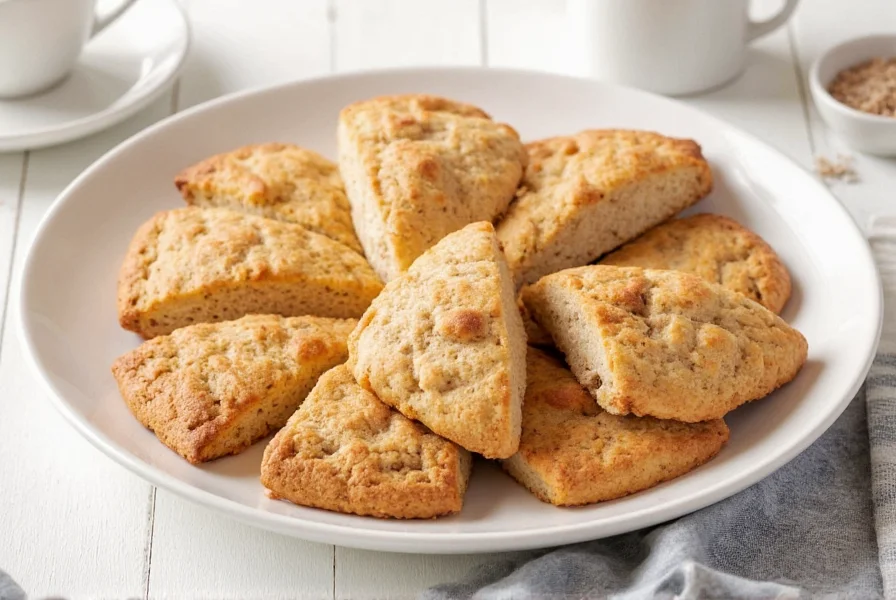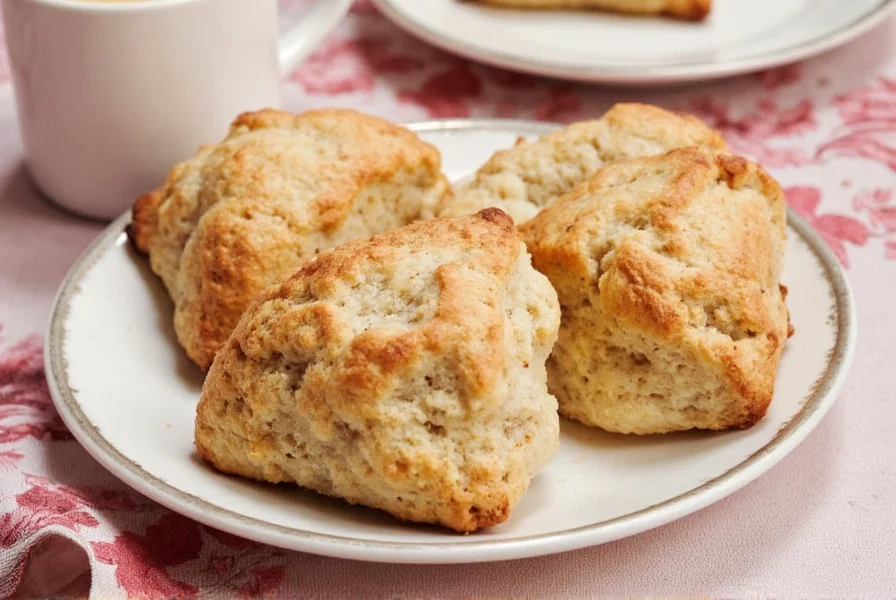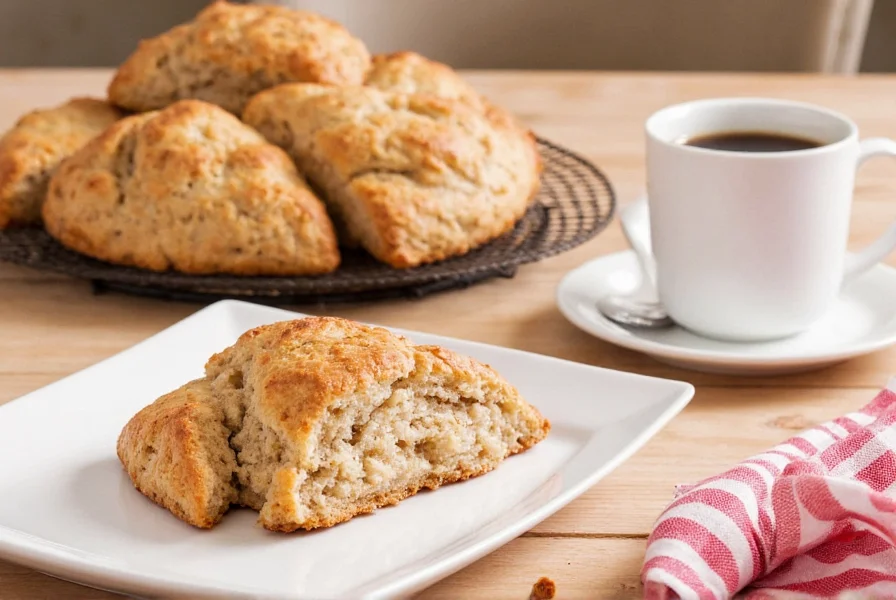Nothing compares to the aroma of freshly baked cinnamon scones filling your kitchen. These beloved pastries combine the comforting familiarity of traditional scones with the warm, nostalgic spice of cinnamon. Unlike their plain counterparts, cinnamon scones offer a delightful flavor dimension that makes them perfect for special occasions or elevating your everyday coffee break.
The Essential Components of Perfect Cinnamon Scones
Creating exceptional cinnamon scones requires understanding the role each ingredient plays in the final product. The magic happens through the interaction of fat, flour, leavening agents, and of course, cinnamon.
| Ingredient | Function | Professional Tip |
|---|---|---|
| Cold butter | Creates flakiness through steam pockets | Grate frozen butter for even distribution |
| Buttermilk | Activates baking soda, adds tenderness | Chill before using for better rise |
| Cinnamon | Primary flavor component | Use Ceylon cinnamon for complex flavor |
| Heavy cream | Creates golden crust, enhances richness | Brush generously before baking |
Step-by-Step Preparation Guide
Follow these detailed instructions for bakery-quality cinnamon scones at home. The key to success lies in handling the dough minimally and maintaining cold ingredients throughout the process.
Creating the Dough
Begin by combining 2½ cups of all-purpose flour, ⅓ cup of granulated sugar, 1 tablespoon of baking powder, ½ teaspoon of baking soda, and 1 teaspoon of fine sea salt in a large mixing bowl. Add 1½ teaspoons of ground cinnamon—this forms the foundation of your cinnamon scones flavor profile. For an extra dimension, consider adding a pinch of nutmeg or cardamom.
Cut ½ cup (one stick) of very cold unsalted butter into small cubes. Work the butter into the dry ingredients using a pastry cutter or your fingertips until the mixture resembles coarse meal with pea-sized butter pieces. This technique creates the flaky layers characteristic of perfect cinnamon scones.
Incorporating Wet Ingredients
Create a well in the center of your dry ingredients and add ¾ cup of cold buttermilk and 1 large egg. Gently fold the mixture together using a rubber spatula until the dough just begins to come together. Be careful not to overmix—this is crucial for tender cinnamon scones rather than tough ones.
Turn the shaggy dough onto a lightly floured surface and gently knead it 3-4 times to bring it together. Pat the dough into a 1-inch thick circle. Using a sharp knife, cut the circle into 8 equal wedges. This traditional shaping method creates the classic scone appearance while ensuring even baking.
Professional Baking Techniques
The difference between good and exceptional cinnamon scones often comes down to baking technique. Preheat your oven to 400°F (200°C) and line a baking sheet with parchment paper. Place your scone wedges on the prepared sheet, leaving at least 2 inches between them to allow for expansion.
For that professional bakery finish, brush the tops generously with heavy cream and sprinkle with coarse sugar. This creates a beautiful golden crust that contrasts perfectly with the tender interior. Bake for 18-22 minutes, or until the scones are golden brown and a toothpick inserted in the center comes out clean.
Avoiding Common Cinnamon Scone Mistakes
Even experienced bakers encounter issues with cinnamon scones. Understanding these common pitfalls will help you achieve consistent results:
- Overworking the dough - This develops gluten, resulting in tough scones rather than tender ones
- Using warm ingredients - Cold butter and buttermilk are essential for proper rise and flakiness
- Incorrect cinnamon measurement - Too little lacks flavor impact; too much creates bitterness
- Improper cutting technique - Sawing motions compress the dough, affecting rise
- Overbaking - Scones continue cooking from residual heat after removal from oven
Delicious Variations to Try
Once you've mastered the basic cinnamon scones recipe, experiment with these popular variations:
- Cinnamon sugar swirl scones - Create a pocket in the dough and fill with cinnamon sugar before shaping
- Cinnamon raisin scones - Add ½ cup of plump raisins soaked in warm water
- Cinnamon apple scones - Fold in ⅓ cup of finely diced apple for seasonal variation
- Cinnamon streusel top scones - Add a crumb topping before baking for extra texture
- Cinnamon glaze drizzle - Finish with a simple powdered sugar and milk glaze

Serving and Storage Recommendations
Cinnamon scones are best enjoyed warm, ideally within a few hours of baking. Serve them with a pat of good quality butter that melts into the crevices, or pair with clotted cream for a traditional British tea experience. They complement coffee, tea, or even hot chocolate beautifully.
For storage, place cooled scones in an airtight container at room temperature for up to 2 days. To extend freshness, freeze scones on a baking sheet before transferring to freezer bags. They'll keep well for up to 3 months. When ready to serve, thaw at room temperature and refresh in a 300°F oven for 5-7 minutes.
Why This Recipe Works
The science behind perfect cinnamon scones lies in the balance of ingredients and technique. The combination of baking powder and baking soda provides optimal rise, while the cold butter creates steam pockets that result in flaky layers. Buttermilk's acidity reacts with the baking soda, enhancing both rise and tenderness while contributing to that distinctive tangy flavor profile that complements the cinnamon.
Using the right type of cinnamon matters more than many home bakers realize. While common cassia cinnamon works well, experimenting with Ceylon cinnamon (often called "true cinnamon") can yield more complex, nuanced flavor in your cinnamon scones without the slight bitterness sometimes associated with cassia.

Frequently Asked Questions
What's the difference between cinnamon scones and cinnamon rolls?
Cinnamon scones are quick breads made with a biscuit-like dough that's cut into wedges, while cinnamon rolls are yeast-raised pastries rolled with cinnamon sugar filling. Scones have a more crumbly, cake-like texture compared to the soft, chewy texture of cinnamon rolls.
Why are my cinnamon scones dry and crumbly?
Dry, crumbly scones typically result from overmixing the dough or using too much flour. Measure flour properly by spooning it into the measuring cup and leveling off. Also ensure you're not overbaking them—remove from oven when just golden as they continue cooking from residual heat.
Can I make cinnamon scones ahead of time?
Yes, you can prepare cinnamon scones ahead of time. Shape the dough wedges, place on baking sheet, cover tightly, and refrigerate overnight. Bake straight from the refrigerator the next morning, adding 2-3 minutes to the baking time. You can also freeze unbaked scones for up to 3 months.
What's the best type of cinnamon for cinnamon scones?
Both cassia and Ceylon cinnamon work well in scones. Cassia (common grocery store cinnamon) has a stronger, spicier flavor, while Ceylon (often labeled 'true cinnamon') offers a more delicate, complex flavor with less bitterness. Many bakers prefer a 50/50 blend of both types for optimal cinnamon scones flavor profile.











 浙公网安备
33010002000092号
浙公网安备
33010002000092号 浙B2-20120091-4
浙B2-20120091-4